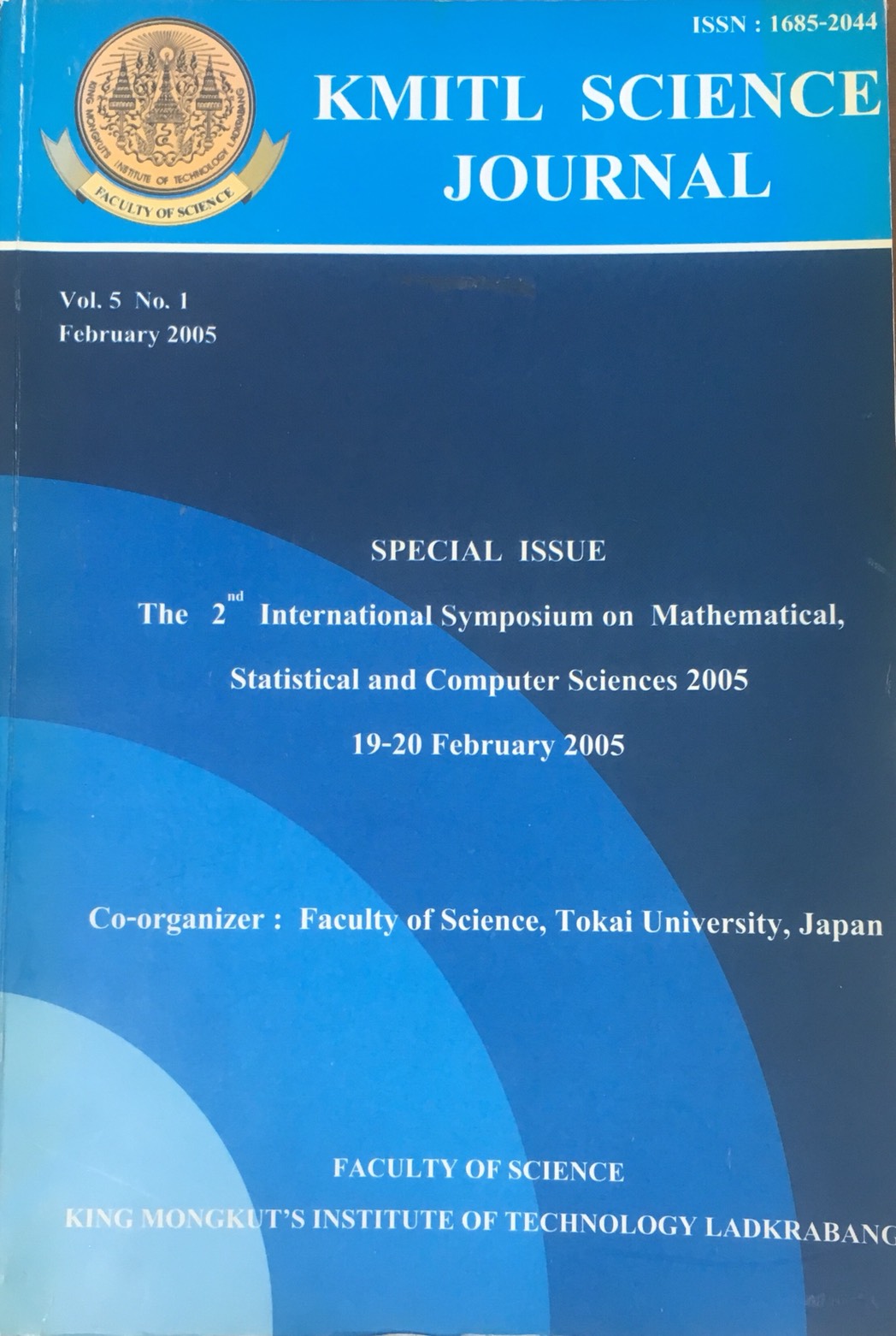Optimal control for the traffic congestion in Bangkok
Main Article Content
Abstract
We investigate the optimal control for the traffic congestion in Bangkok. In the queueing model we refer the traffic in a crossing as the flow of jobs, the traffic time in the crossing as those of the service time. The traffic consists of two kinds of flows, main and secondary ones. Furthermore we define a traffic controller as a server in the queueing system. At the instant of service completion (cars passed the crossing) in the main flow, the controller is continuously busy as long as there is any job in the main flow. As soon as the controller finds the main flow empty, however, he takes another job in the secondary flow (control of against flows). The service time of job is assumed to be a random variable with exponential distribution. As regards taking services in the secondary flows, the server returns to the main flow immediately after a single job whether there is a job or not in the main flow. By taking a job the server utilizes a part or all of his idle time for additional job in the secondary flow.
For the model above, we obtained the stationary distribution of the system size and that of the waiting time ([1]). In this paper we have the optimal secondary service rate for the model.
Keywords: -
Corresponding author: E-mail: cast@kmitl.ac.th
Article Details
Copyright Transfer Statement
The copyright of this article is transferred to Current Applied Science and Technology journal with effect if and when the article is accepted for publication. The copyright transfer covers the exclusive right to reproduce and distribute the article, including reprints, translations, photographic reproductions, electronic form (offline, online) or any other reproductions of similar nature.
The author warrants that this contribution is original and that he/she has full power to make this grant. The author signs for and accepts responsibility for releasing this material on behalf of any and all co-authors.
Here is the link for download: Copyright transfer form.pdf


